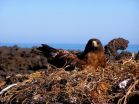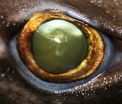(Press-News.org) Human milk is infant food, but for sick, hospitalized babies, it's also medicine. That's the central premise of a series of articles in a neonatal nursing journal's special issue focused on human milk for sick newborns. The articles are being published during World Breastfeeding Week, Aug. 1-7, 2014.
Multiple public health and professional medical associations from the World Health Organization to the American Academy of Pediatrics have endorsed the widespread advantages of human milk and breastfeeding for all infants. A new issue of Advances in Neonatal Care is devoted to best practices in providing human milk to hospitalized infants.
"The immunological and anti-inflammatory properties of human milk are especially important for the critically ill infants in our intensive care units," said Diane L. Spatz, Ph.D., R.N.-B.C., FAAN, nurse researcher and director of the Lactation Program at The Children's Hospital of Philadelphia (CHOP), and the invited guest editor of the August 2014 issue of the journal, published by the National Association of Neonatal Nurses.
An internationally prominent lactation expert, Spatz leads a robust breastfeeding and Lactation Program at CHOP. CHOP is already on the cutting edge of human milk science and lactation services with a state-of-the-art Human Milk Management Center, and round-the-clock support from nurses and international board-certified lactation consultants, as well as wide-spread institutional support. At CHOP, more than four out of five infants discharged from the Hospital's intensive care units are receiving human milk.
The Hospital has used donor human milk since 2006 for at-risk infants to supplement a mother's own milk supply if it is insufficient or if the mother is unable to provide milk for her infant. This week, CHOP announced plans to launch a non-profit milk bank with the Human Milk Banking Association of North America within a year, an onsite resource not commonly offered within a U.S. children's hospital.
In the special issue, Spatz and her colleagues from CHOP and other institutions cover a variety of topics on the provision of human milk in the neonatal intensive care unit (NICU), including original research articles, ethical rationales for the provision of human milk, and evidence-based methods for implementing particular programs.
"Characteristics of the NICU Work Environment Associated with Breastfeeding Support," original research led by Sunny G. Hallowell, Ph.D., PPCNP-BC, IBCLC, of the University of Pennsylvania School of Nursing, analyzes data from a 2008 survey of 6,060 registered nurses in 104 NICUs. This large national sample found that overall, NICU nurses provided breastfeeding support to about 1 in 7 mothers, around the clock. Infants and mothers were more likely to receive this support in units with adequate nurse staffing. Low-birthweight infants were significantly more likely to be discharged on human milk when NICUs were staffed by nurses with B.S.N. degrees.
"An Ethical Case for the Provision of Human Milk in the NICU," by Elizabeth B. Froh, Ph.D., R.N., clinical supervisor of CHOP's Lactation Team and the Human Milk Management Center, and Spatz, argues that under the "best interest principle" the infant's best interest, not parental authority, should have priority in guiding infant feeding practices, particularly for critically ill babies in the NICU. The well-documented health benefits of human milk, say the authors, make it the optimal form of nutrition for those infants.
"Implementation of a Human Milk Management Center," by Spatz and colleagues describes the CHOP experience in developing its Human Milk Management Center. This centralized facility optimizes the provision of human milk for the most vulnerable infants, allowing staff to analyze human milk, fortifying milk under clean conditions, and making skim milk for infants with conditions requiring it. The authors also discuss logistical considerations, staff training requirements for milk technicians, best safety practices and other organizational processes.
Additional articles in the issue examine these topics:
An integrative review of breast pumping support needed by mothers of NICU infants
Congenital hyperinsulinism: exclusive human milk and breastfeeding
Implementing a breastfeeding peer support group in a children's hospital
Considerations in meeting protein needs of the human milk-fed preterm infant
Environmental factors affecting breastfeeding duration within a NICU
"Supporting the use of human milk is one of the most effective evidence-based strategies to ensure an infant's safe journey through the NICU and promote optimal health and developmental outcomes for these children," added Spatz. "This special edition provides clinicians with tools in order to transform human milk and breastfeeding practices in their own institutions."
INFORMATION:
In addition to her CHOP position, Spatz holds a joint appointment as a Professor of Perinatal Nursing and the Helen M. Shearer Professor of Nutrition at the University of Pennsylvania School of Nursing.
Advances in Neonatal Care, August 2014.
About The Children's Hospital of Philadelphia: The Children's Hospital of Philadelphia was founded in 1855 as the nation's first pediatric hospital. Through its long-standing commitment to providing exceptional patient care, training new generations of pediatric healthcare professionals and pioneering major research initiatives, Children's Hospital has fostered many discoveries that have benefited children worldwide. Its pediatric research program receives the highest amount of National Institutes of Health funding among all U.S. children's hospitals. In addition, its unique family-centered care and public service programs have brought the 535-bed hospital recognition as a leading advocate for children and adolescents. For more information, visit http://www.chop.edu.
How critically ill infants can benefit most from human milk
During World Breastfeeding Week, CHOP experts, colleagues cover multiple topics in using human milk in the NICU
2014-08-07
ELSE PRESS RELEASES FROM THIS DATE:
Study: Link between vitamin D and dementia risk confirmed
2014-08-06
MINNEAPOLIS – In the largest study of its kind, researchers suggests that in older people, not getting enough vitamin D may double the risk of developing dementia and Alzheimer's disease. The study is published in the August 6, 2014, online issue of Neurology®, the medical journal of the American Academy of Neurology.
The study looked at blood levels of vitamin D, which includes vitamin D from food, supplements and sun exposure. Dietary vitamin D is found in fatty fish such as salmon, tuna or mackerel and milk, eggs and cheese.
"We expected to find an association ...
Link between vitamin D and dementia risk confirmed
2014-08-06
Vitamin D deficiency is associated with a substantially increased risk of dementia and Alzheimer’s disease in older people, according to the most robust study of its kind ever conducted.
An international team, led by Dr David Llewellyn at the University of Exeter Medical School, found that study participants who were severely Vitamin D deficient were more than twice as likely to develop dementia and Alzheimer’s disease.
The team studied elderly Americans who took part in the Cardiovascular Health Study. They discovered that adults in the study who were moderately deficient ...
Aggressive outreach increases organ donation among Hispanic Americans
2014-08-06
Bottom Line: An outreach campaign that included local media and culturally sensitive educational programs in targeted neighborhoods was associated with an increase in consent rates for organ donation among Hispanic Americans in the Los Angeles area.
Author: Ali Salim, M.D., of Brigham and Women's Hospital, Boston, and colleagues.
Background: Nearly 20 people die each day waiting for an organ transplant. The organ shortage affects all ethnic groups but is more pronounced in minority populations.
How the Study Was Conducted: The authors examined an aggressive outreach ...
History of fire and drought shapes the ecology of California, past and future
2014-08-06
Fire season has arrived in California with vengeance in this third year of extended drought for the state. A series of large fires east of Redding and Fresno, in Yosemite, and on the Oregon border prompted Gov. Jerry Brown to declare a state of emergency on Sunday, August 3rd.
As force of destruction and renewal, fire has a long and intimate history with the ecology of California. Ecological scientists will discuss aspects of that history in detail at the upcoming 99th Annual Meeting of the Ecological Society of America on August 10 – 15th, 2014.
"Big fires today are ...
Galápagos hawks hand down lice like family heirlooms
2014-08-06
Say what you will about the parasitic lifestyle, but in the evolution of life on Earth, it's a winner.
Given that about half of all known species are parasites, biologists have long hypothesized that the strategy of leeching off other organisms is a major driver of biodiversity. Studying populations of Galápagos hawks (Buteo galapagoensis) and feather lice that live in their plumage (Degeeriella regalis), a group led by University of Arizona ecologists and evolutionary biologists has gathered some of the first field evidence suggesting that a phenomenon called co-divergence ...
NASA's Hubble finds supernova star system linked to potential 'zombie star'
2014-08-06
Using NASA's Hubble Space Telescope, a team of astronomers has spotted a star system that could have left behind a "zombie star" after an unusually weak supernova explosion.
A supernova typically obliterates the exploding white dwarf, or dying star. On this occasion, scientists believe this faint supernova may have left behind a surviving portion of the dwarf star -- a sort of zombie star.
While examining Hubble images taken years before the stellar explosion, astronomers identified a blue companion star feeding energy to a white dwarf, a process that ignited a nuclear ...
New research links tornado strength, frequency to climate change
2014-08-06
TALLAHASSEE, Fla. — New research by a Florida State University geography professor shows that climate change may be playing a key role in the strength and frequency of tornadoes hitting the United States.
Published Wednesday in the journal Climate Dynamics, Professor James Elsner writes that though tornadoes are forming fewer days per year, they are forming at a greater density and strength than ever before. So, for example, instead of one or two forming on a given day in an area, there might be three or four occurring.
"We may be less threatened by tornadoes on a ...
Fipronil and imidacloprid reduce honeybee mitochondrial activity
2014-08-06
PENSACOLA, Fla. — New research published in Environmental Toxicology and Chemistry addresses the effects of two broad-spectrum systemic insecticides, fipornil and imidacloprid, on honeybees. These insecticides are widely used in agriculture, and the authors conclude that fipronil and imidacloprid are inhibitors of mitochondrial bioenergetics, resulting in depleted cell energy. This action can explain the toxicity of these compounds for honeybees.
Scientists are urgently trying to determine the causes of colony collapse disorder and the alarming population declines of ...
Community religious beliefs influence whether wives work outside home, Baylor study finds
2014-08-06
Married women who live in communities in which a higher proportion of the population belongs to conservative religious traditions — such as evangelical or Mormon — are more likely to choose not to work outside the home, even if the women are not members of those faith groups, according to a Baylor University study.
The study — "Work-Family Conflict: The Effects of Religious Context on Married Women's Participation in the Labor Force" — appears in the journal Religions in a special issue, "Religion, Spirituality, and Family Life."
While previous research has shown individual ...
Photon hunting in the twilight zone
2014-08-06
The eyes of deep-sea bioluminescent sharks have a higher rod density when compared to non-bioluminescent sharks, according to a study published August 6, 2014 in the open-access journal PLOS ONE by Julien M. Claes, postdoctoral researcher from the FNRS at Université catholique de Louvain (Belgium), and colleagues. This adaptation is one of many these sharks use to produce and perceive bioluminescent light in order to communicate, find prey, and camouflage themselves against predators.
The mesopelagic twilight zone, or about 200-1000 meters deep in the sea, is a vast, ...
LAST 30 PRESS RELEASES:
Post-stroke injection protects the brain in preclinical study
Cardiovascular risk score predicts multiple eye diseases
Health: estimated one in ten British adults used or interested in GLP-1 medications for weight loss
Exercise to treat depression yields similar results to therapy
Whooping cough vaccination for pregnant women strengthens babies’ immune system
Dramatic decline in new cases of orphanhood in Uganda driven by HIV treatment and prevention programs
Stopping weight loss drugs linked to weight regain and reversal of heart health markers
Higher intake of food preservatives linked to increased cancer risk
Mass General Brigham–developed cholera vaccine completes phase 1 trial
First experimental validation of a “150-year-old chemical common sense” direct visualization of the molecular structural changes in the ultrafast anthracene [4+4] photocycloaddition reaction
Lack of support for people on weight loss drugs leaves them vulnerable to nutritional deficiencies, say experts
Dogs’ dinners can have greater climate impact than owners’
Are you ready to swap salmon for sprats and sardines?
1.6 million UK adults used weight loss drugs in past year
American College of Cardiology comments on new dietary guidelines for Americans
American Society of Gene & Cell Therapy and Orphan Therapeutics Accelerator partner to advance and commercialize promising rare disease treatments
One in 14 patients having day case surgery have new or worse chronic pain 3 months after their operation
New study highlights link between eviction rates and gun violence
Heatwaves heat up soil but not toxin levels in rice, study finds
Digital modeling reveals where construction carbon emissions really come from
Turning farm waste into water filters
New study shows how the spleen helps the immune system accept a transplant
New Mayo Clinic study advances personalized prostate cancer education with an EHR-integrated AI agent
Researchers identify novel therapeutic target to improve recovery after nerve injury
Microbes in breast milk help populate infant gut microbiomes
Reprogramming immunity to rewrite the story of Type 1 diabetes
New tool narrows the search for ideal material structures
Artificial saliva containing sugarcane protein helps protect the teeth of patients with head and neck cancer
Understanding the role of linear ubiquitination in T-tubule biogenesis
Researchers identify urban atmosphere as primary reservoir of microplastics
[Press-News.org] How critically ill infants can benefit most from human milkDuring World Breastfeeding Week, CHOP experts, colleagues cover multiple topics in using human milk in the NICU




